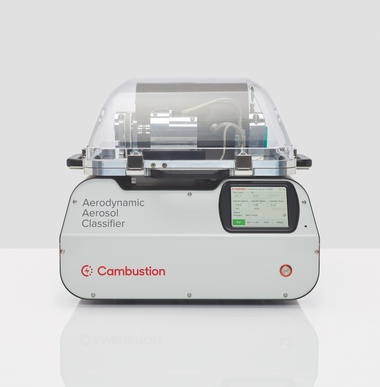I am interested in this product
Close Form

The Aerodynamic Aerosol Classifier is a unique aerosol instrument, capable of classifying particles between 25 nm and > 5,000 nm (PM5) according to their aerodynamic diameter. As the AAC classification principle is independent of particle charge, no charger or neutralizer is required for operation. Moreover, the output is not affected by multiple charging issues or by low charging efficiencies, ensuring that only a single aerodynamic peak is present, and that particle transmission remains high across the entirety of the wide size range. Whilst in the past impactors allowed selection of small particles, and virtual impactors the selection of large particles, only the Cambustion AAC allows the selection of particles in a finite range by aerodynamic particle size.
I am interested in this product
Close Form
Downloads
Detailed Specs
Production of a truly monodisperse aerosol:
- As an improved alternative to the Differential Mobility Analyzer (DMA), offering a wider size range, higher transmission efficiency, and no multiple charging artefacts.
- For filter & facemask penetration efficiency testing.
- Where aerodynamic diameter is the metric of choice (inhalation / lung penetration , particle deposition, in-vitro / lung cell exposure studies).
- As a calibration aerosol for optical devices, including Optical Particle Counters (OPCs), optical spectrometers, condensation particle counters (CPCs) and WIBS.
- When using complex or large aerosols where charge correction would be problematic.
In combination with other equipment:
- With a Condensation Particle Counter (CPC) to form the Scanning Aerodynamic Size Spectrometer, or SASS (the equivalent of the Scanning Mobility Particle Sizer or SMPS). The pairing of the AAC and CPC is possible via integrated software and allows the determination of aerodynamic particle size distributions (APSD) from first principles with high accuracy and high resolution.
- With a Centrifugal Particle Mass Analyser (CPMA) or DMA, and a CPC – to study nanoparticle structure (the fractal shape / effective density of non-spherical aerosol particles.)
As a low-pass separator / variable impactor:
- A reversible user modification allows the AAC to be used as a “variable impactor”, such that the particles smaller than the setpoint (which would normally be lost in the sheath flow and internal filters) may be intercepted and used for further experiment.


